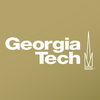
Overview
Founded in 1885, the Georgia Institute of Technology is a non-profit public higher education institution located in the urban setting of the medium city of Atlanta (population range of 250,000-499,999 inhabitants), Georgia. Officially accredited by the Southern Association of Colleges and Schools Commission on Colleges, Georgia Institute of Technology (Georgia Tech) is a large-sized (uniRank enrollment range: 25,000-29,999 students) coeducational US higher education institution. Georgia Institute of Technology (Georgia Tech) offers courses and programs leading to officially recognized higher education degrees such as bachelor's degrees, master's degrees and doctorate degrees in several areas of study. See the uniRank degree levels and areas of study table below for further details. This 138-year-old US higher-education institution has a selective admission policy based on entrance examinations and students' past academic records and grades. The acceptance rate range is 10-19% making this US higher education organization an extremely selective institution. International students are welcome to apply for enrollment. Georgia Tech also provides several academic and non-academic facilities and services to students including a library, housing, sports facilities, financial aids and/or scholarships, study abroad and exchange programs, online courses and distance learning opportunities, as well as administrative services.
University Snapshot
Control
![]() public
public
Entity
![]() non-profit
non-profit
Size
![]() large-sized
large-sized
Selectivity
![]() extremely selective
extremely selective
University Identity
| Name | Georgia Institute of Technology |
|---|---|
| Acronym | Georgia Tech |
| Founded | 1885 |
| Motto | Progress and Service |
| Colours | White and old gold |
| Mascot | Buzz and Ramblin' Wreck |
| Screenshot |

|
| Video Presentation |
n.a.; please submit an official Georgia Institute of Technology general video presentation. |
University Location
| Address | 225 North Avenue Atlanta 30332-0530 Georgia United States |
|---|---|
| Location Map and Satellite View | |
| +1 (404) 894 2000 | |
| +1 (404) 894 1277 |





Social Media
Introduction
Social media can be a powerful tool for Universities to communicate with current students, alumni, faculty, staff and the wider community. But how can social media be important for prospective students? Read our article about the importance of Social Media for universities and prospective students to learn more.
Social Media
uniRank publishes brief reviews, rankings and metrics of some Georgia Institute of Technology's social media channels as a starting point for comparison and an additional selection tool for potential applicants.
Georgia Institute of Technology's Facebook page
Georgia Institute of Technology's X (formerly Twitter) page
Georgia Institute of Technology's YouTube channel
Georgia Institute of Technology's Instagram page
Georgia Institute of Technology's main LinkedIn profile
n.a.